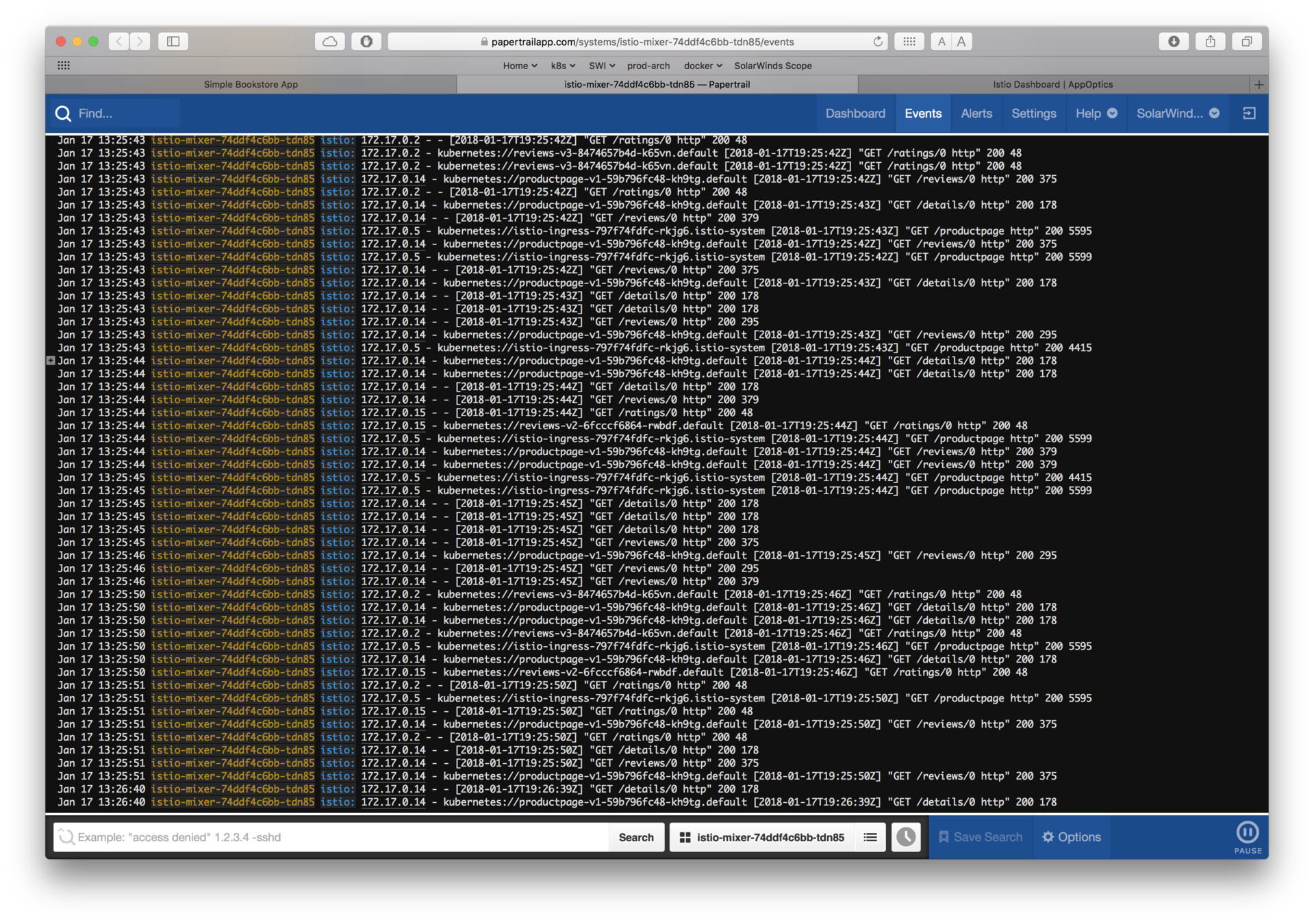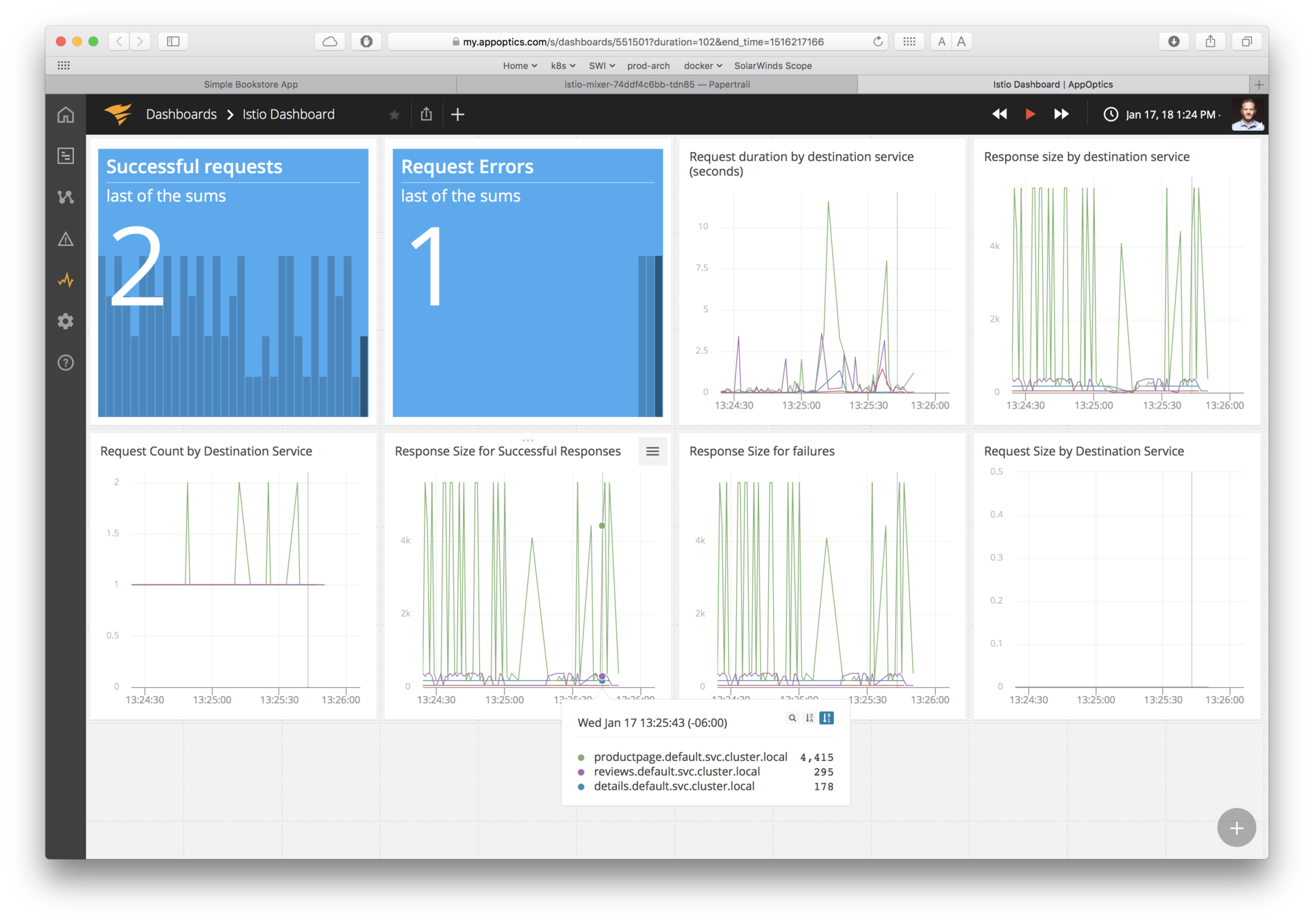Istio at Scale
large and small

May 2019
No service mesh
solarwinds.io

Service Mesh Architectures
Service Mesh Architecture
Data Plane
- Touches every packet/request in the system.
- Responsible for service discovery, health checking, routing, load balancing, authentication, authorization, and observability.
Ingress Gateway
Egress Gateway
Service Mesh Architecture
No control plane? Not a service mesh.
Egress Gateway
Control Plane
Data Plane
- Touches every packet/request in the system.
- Responsible for service discovery, health checking, routing, load balancing, authentication, authorization, and observability.
- Provides policy, configuration, and platform integration.
- Takes a set of isolated stateless sidecar proxies and turns them into a service mesh.
- Does not touch any packets/requests in the data path.
Ingress Gateway
Service Mesh Architecture
Control Plane
Data Plane
- Touches every packet/request in the system.
- Responsible for service discovery, health checking, routing, load balancing, authentication, authorization, and observability.
- Provides policy, configuration, and platform integration.
- Takes a set of isolated stateless sidecar proxies and turns them into a service mesh.
- Does not touch any packets/requests in the data path.
You need a management plane.
Ingress Gateway
Egress Gateway
Management
Plane
- Provides monitoring, backend system integration, expanded policy and application configuration.
Pilot
Citadel
Mixer
Control Plane
Data Plane
istio-system namespace
policy check
Foo Pod
Proxy Sidecar
Service Foo
tls certs
discovery & config
Foo Container
Bar Pod
Proxy Sidecar
Service Bar
Bar Container
Out-of-band telemetry propagation
telemetry
reports
Control flow during request processing
application traffic
Application traffic
application namespace
telemetry reports
Istio Architecture

Galley
Ingress Gateway
Egress Gateway
Control Plane
Data Plane
linkerd-system namespace
Foo Pod
Proxy Sidecar
Service Foo
Foo Container
Bar Pod
Proxy Sidecar
Service Bar
Bar Container
Out-of-band telemetry propagation
telemetry
scarping
Control flow during request processing
application traffic
Application traffic
application namespace
telemetry scraping
Architecture
destination
Prometheus
Grafana
tap
web
CLI
proxy-api
public-api
Linkerd
proxy-injector
Service Mesh Deployment Models
Client
Edge Cache
Istio Gateway
(envoy)
Cache Generator
Collection of VMs running APIs
service mesh
Istio VirtualService
Istio VirtualService
Istio ServiceEntry
Situation:
- existing services running on VMs (that have little to no service-to-service traffic).
- nearly all traffic flows from client to the service and back to client.
Benefits:
- gain granular traffic control (e.g path rewrites).
- detailed service monitoring without immediately deploying a thousand sidecars.
Deployment Model: Ingress
Out-of-band telemetry propagation
Control flow during request processing
Application traffic
Proxy per Node
Service A
Service A
Service A
linkerd
Node (server)
Service A
Service A
Service B
linkerd
Node (server)
Service A
Service A
Service C
linkerd
Node (server)
Advantages:
-
Less (memory) overhead.
-
Simpler distribution of configuration information.
-
primarily physical or virtual server based; good for large monolithic applications.
Disadvantages:
-
Coarse support for encryption of service-to-service communication, instead host-to-host encryption and authentication policies.
-
Blast radius of a proxy failure includes all applications on the node, which is essentially equivalent to losing the node itself.
-
Not a transparent entity, services must be aware of its existence.
More deployment models
at
layer5.io/books
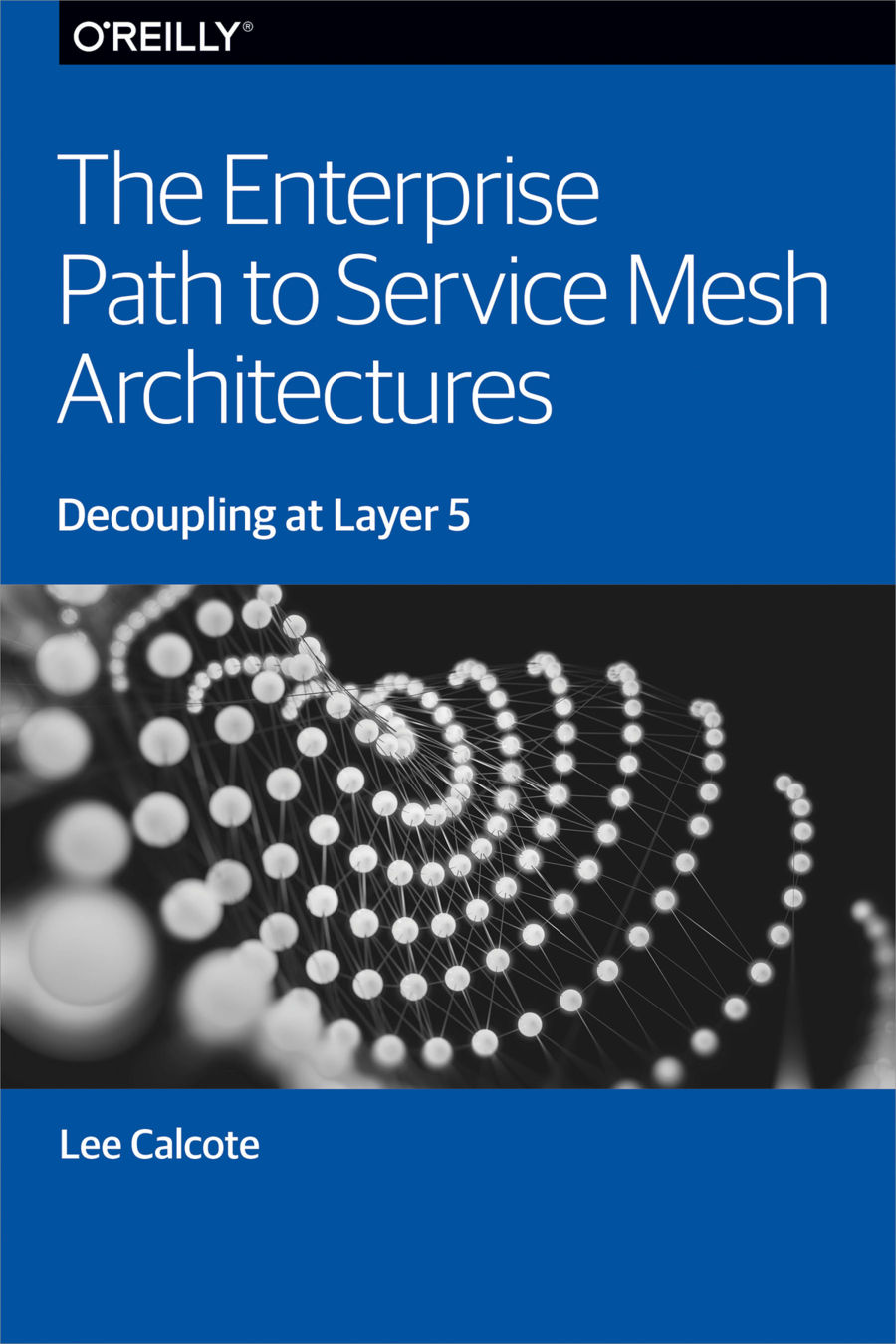
Advantages:
-
Good starting point for building a brand-new microservices architecture or for migrating from a monolith.
Disadvantages:
-
When the number of services increase, it becomes difficult to manage.

Router "Mesh"
Pilot+Mixer+mTLS+Ingress

solarwinds.io on Istio
Mixer
Mixer
Control Plane
Data Plane
istio-system namespace
Foo Pod
Proxy sidecar
Service Foo
Foo Container
Out-of-band telemetry propagation
Control flow during request processing
application traffic
application traffic
application namespace
telemetry reports



an attribute processing engine
AppOptics™
- Uses pluggable adapters to extend its functionality
- Adapters run within the Mixer process
- Adapters are modules that interface to infrastructure backends
- (logging, metrics, quotas, etc.)
- Multi-interface adapters are possible
- (e.g., SolarWinds® adapter sends logs and metrics)
Mixer Adapters
types: logs, metrics, access control, quota
Papertrail™
Prometheus™



Stackdriver™
Open Policy Agent
Grafana™
Fluentd
Statsd
®

Pilot
Citadel
Mixer
istio-system namespace
Galley
Control Plane
Meshery
a multi-service mesh management plane
https://layer5.io/meshery


Service Mesh Interface (SMI)
Load Generation
a multi-service mesh management plane


Service Mesh Interface (SMI)
Lab 4
@lcalcote
Meshery
layer5.io/books
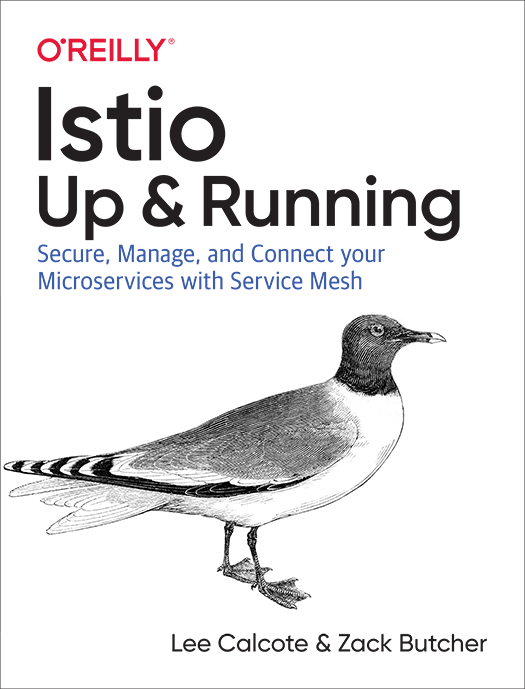
Adopting a service mesh
layer5.io/landscape
Adopter’s Dilemma
Which service mesh to use?
What's the catch? Nothing's for free.
Playground
WHICH SERVICE MESH SHOULD I USE AND HOW DO I GET STARTED?
Learn about the functionality of different service meshes and visually manipulate mesh configuration.
Performance Benchmark
WHAT OVERHEAD DOES BEING ON THE SERVICE MESH INCUR?
Benchmark the performance of your application across different service meshes and compare their overhead.
layer5.io/meshery
@lcalcote
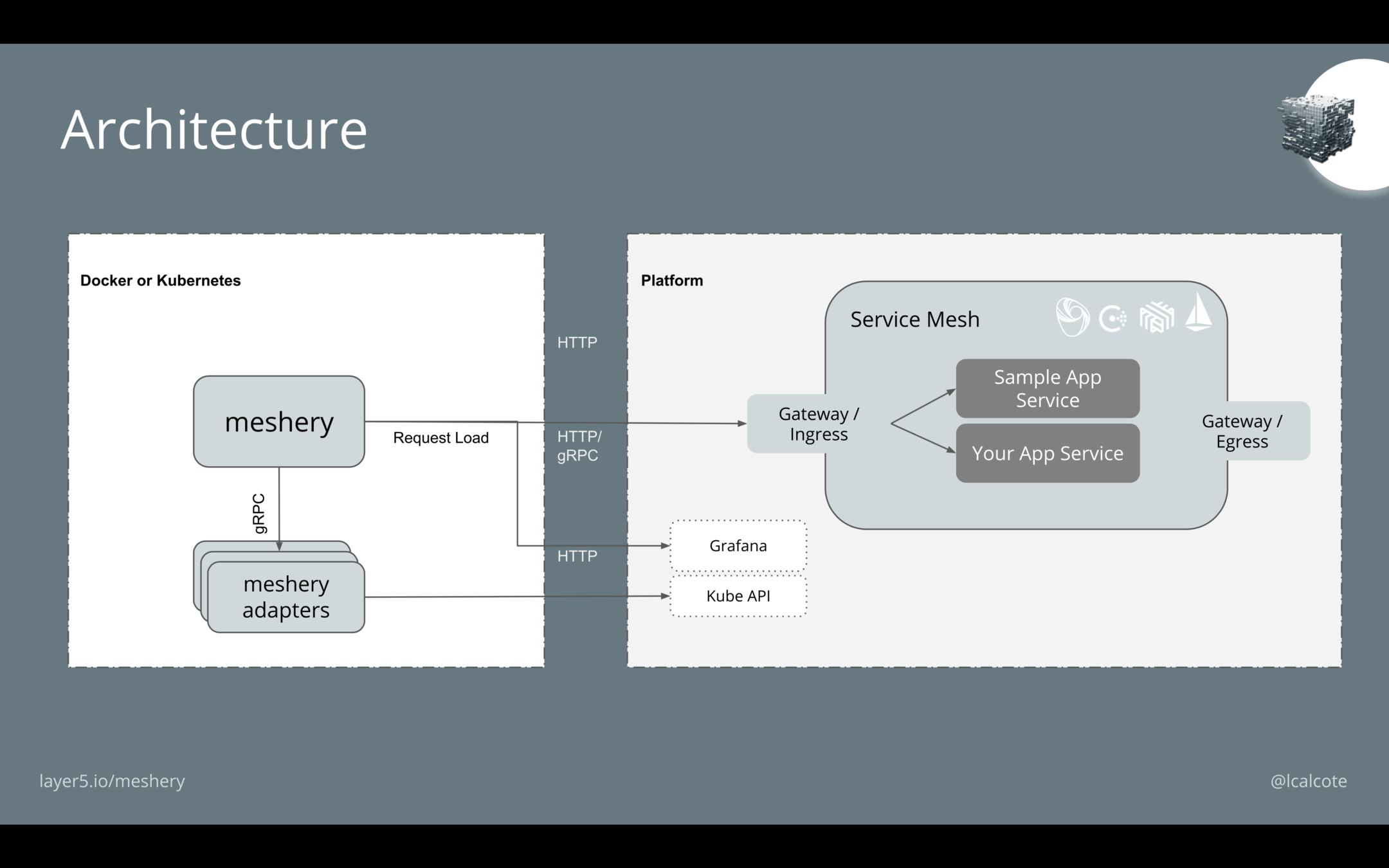
Side-by-Side Performance Comparison
Istio
Linkerd
Octarine
NSM
App Mesh
@lcalcote
results coming forthcoming at KubeCon EU...
Consul
Up next...
(service meshes contributing adapters)
Kubernetes
(no mesh)

Demo
Relative
Showdown!
Slowdown
@lcalcote
layer5.io/meshery

| Cores | Threads | Istio (2) | Linkerd |
|---|---|---|---|
| 8 | 8 | 1 | 1 |
| 8 | 16 | 1.7 | 1.8 |
| 8 | 32 | 3.2 | 3.4 |
| 8 | 100 | 9.3 | 9.6 |
(2) mTLS on, tracing off
Relative
Showdown!
Slowdown
@lcalcote
layer5.io/meshery

| Cores | Threads | Istio (1) | Istio (2) | Linkerd |
|---|---|---|---|---|
| 8 | 8 | 1 | 1 | 1 |
| 8 | 16 | 1.4 | 1.7 | 1.8 |
| 8 | 32 | 18.4 | 3.2 | 3.4 |
| 8 | 100 | 52.2 | 9.3 | 9.6 |
(1) mTLS on, tracing on
(2) mTLS on, tracing off
Mixer
Mixer
Control Plane
Data Plane
istio-system namespace
Foo Pod
Proxy sidecar
Service Foo
Foo Container
Out-of-band telemetry propagation
Control flow during request processing
application traffic
application traffic
application namespace
telemetry reports



an attribute processing engine
Different Response Sizes
@lcalcote
layer5.io/meshery

@lcalcote
layer5.io/meshery

Different Response Sizes
@lcalcote
layer5.io/meshery

Different Response Sizes
Service Mesh Benchmark Specification
A project and vendor-neutral specification for capturing details of:
-
Environment / Infrastructure
-
Number and size of nodes, orchestrator
-
-
Service mesh and its configuration
-
Service / application details
Bundled with test results.

github.com/layer5io/service-mesh-benchmark-spec

@lcalcote
layer5.io/meshery
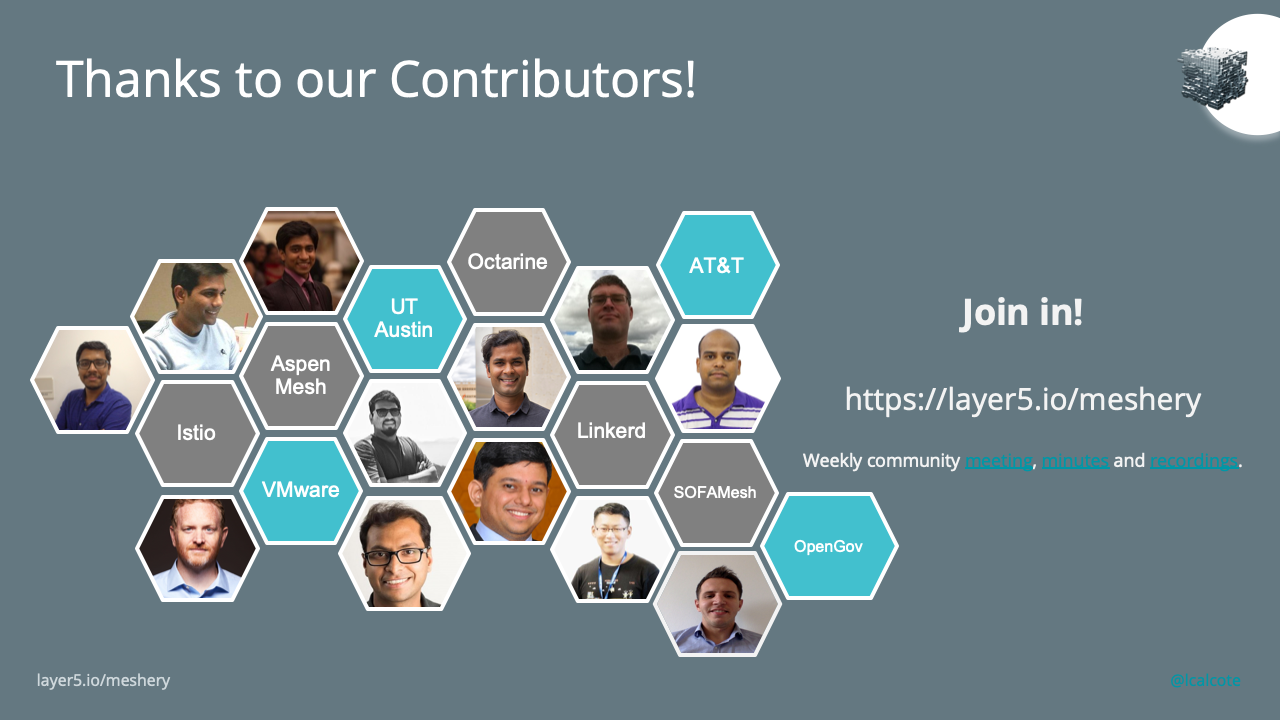
@lcalcote
layer5.io/meshery
Service Mesh Community
Layer5.io
layer5.io/books
What is a Service Mesh?
a dedicated layer for managing service-to-service communication
So, a microservices platform?
obviously.
Orchestrators don't bring all that you need
and neither do service meshes,
but they do get you closer.
Missing: application lifecycle management, but not by much
partially.
a services-first network
Missing: distributed debugging; provide nascent visibility (topology)
Benefits
First few services are relatively easy
Democratization of language and technology choice
Faster delivery, service teams running independently, rolling updates
Challenges
Next 10 or so may introduce pain
Language and framework-specific libraries
Distributed environments, ephemeral infrastructure, out-moded tooling
Microservices
Why use a Service Mesh?
to avoid...
-
Bloated service code
-
Duplicating work to make services production-ready
-
Load balancing, auto scaling, rate limiting, traffic routing...
-
-
Inconsistency across services
-
Retry, tls, failover, deadlines, cancellation, etc., for each language, framework
-
Siloed implementations lead to fragmented, non-uniform policy application and difficult debugging
-
-
Diffusing responsibility of service management
What do we need?
• Observability
• Logging
• Metrics
• Tracing
• Traffic Control
• Resiliency
• Efficiency
• Security
• Policy
a Service Mesh
Observability
what gets people hooked on service metrics
Goals
-
Metrics without instrumenting apps
-
Consistent metrics across fleet
-
Trace flow of requests across services
-
Portable across metric back-end providers
You get a metric! You get a metric! Everyone gets a metric!
© 2018 SolarWinds Worldwide, LLC. All rights reserved.
Traffic Control
control over chaos
- Traffic splitting
- L7 tag based routing?
- Traffic steering
- Look at the contents of a request and route it to a specific set of instances.
- Ingress and egress routing
Resilency
- Systematic fault injection
-
Timeouts and Retries with timeout budget
-
Control connection pool size and request load
-
Circuit breakers and Health checks
content-based traffic steering
Timeouts & Retries
Web
Service Foo
Timeout = 600ms
Retries = 3
Timeout = 300ms
Retries = 3
Timeout = 900ms
Retries = 3
Service Bar
Database
Timeout = 500ms
Retries = 3
Timeout = 300ms
Retries = 3
Timeout = 900ms
Retries = 3
Deadlines
Web
Service Foo
Deadline = 600ms
Deadline = 496ms
Service Bar
Database
Deadline = 428ms
Deadline=180ms
Elapsed=104ms
Elapsed=68ms
Elapsed=248ms
DEV
OPS
Layer 5
where Dev and Ops meet
Problem: too much infrastructure code in services



